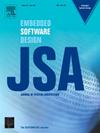LicenseNet: Proactively safeguarding intellectual property of AI models through model license
IF 3.7
2区 计算机科学
Q1 COMPUTER SCIENCE, HARDWARE & ARCHITECTURE
引用次数: 0
Abstract
With the widespread adoption of AI models in edge computing systems, these high-value models face significant risks of theft, misuse, and tampering due to the lower security and reliability of edge devices compared to the cloud. The leakage of models can result in substantial financial losses and security threats, making the protection of intellectual property (IP) crucial. Existing watermark-based IP verification techniques fail to proactively prevent infringement, while other active IP protection solutions often suffer from high overhead, low performance, and inadequate security. This paper proposes LicenseNet, an AI model IP protection framework based on licenses, which enables authorized access to models by embedding license features within them. We design a gradient optimization-based method for synchronizing license training with model parameters and introduce a random perturbation-based data standardization technique. This allows the trained model to generate correct inferences for license data while producing confusing results for original data, thus enhancing the security of the model on edge devices. Additionally, to enhance the model’s resistance against fine-tuning attacks, a supervised discrimination mechanism is incorporated. Experimental results demonstrate that LicenseNet achieves higher security, reduced performance loss, and an improvement in resistance to fine-tuning attacks by at least 29.03% compared to existing methods in edge computing environments.
求助全文
约1分钟内获得全文
求助全文
来源期刊

Journal of Systems Architecture
工程技术-计算机:硬件
CiteScore
8.70
自引率
15.60%
发文量
226
审稿时长
46 days
期刊介绍:
The Journal of Systems Architecture: Embedded Software Design (JSA) is a journal covering all design and architectural aspects related to embedded systems and software. It ranges from the microarchitecture level via the system software level up to the application-specific architecture level. Aspects such as real-time systems, operating systems, FPGA programming, programming languages, communications (limited to analysis and the software stack), mobile systems, parallel and distributed architectures as well as additional subjects in the computer and system architecture area will fall within the scope of this journal. Technology will not be a main focus, but its use and relevance to particular designs will be. Case studies are welcome but must contribute more than just a design for a particular piece of software.
Design automation of such systems including methodologies, techniques and tools for their design as well as novel designs of software components fall within the scope of this journal. Novel applications that use embedded systems are also central in this journal. While hardware is not a part of this journal hardware/software co-design methods that consider interplay between software and hardware components with and emphasis on software are also relevant here.
 求助内容:
求助内容: 应助结果提醒方式:
应助结果提醒方式:


